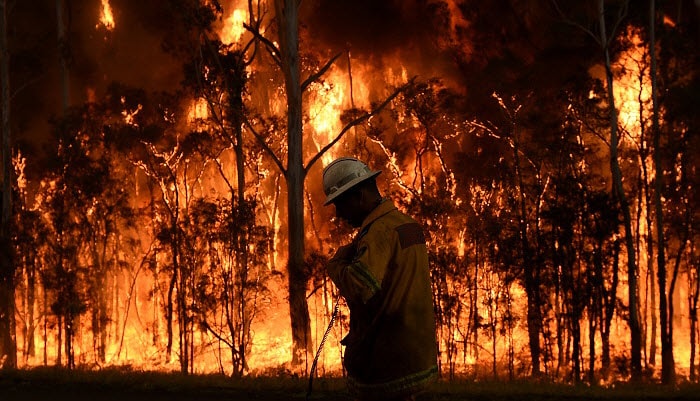Comprehending the Significance of an Extensive BAL Assessment Report
Wiki Article
Crucial Tips for Bushfire Management to Make Certain Fire Protection

Recognizing Bushfire Danger Levels
Understanding the differing degrees of bushfire danger is vital for reliable planning and preparation in mitigating potential risks to properties and lives. Bushfire risk levels are commonly classified based on elements such as climate condition, fuel accessibility, topography, and historic fire habits. By understanding these risk degrees, individuals and neighborhoods can proactively apply approaches to decrease vulnerability and improve durability in the face of potential bushfire occasions.The first degree of bushfire danger is reduced risk, where the chance of a bushfire occurring and causing substantial injury is minimal. This level commonly takes place during durations of low temperature levels, modest humidity, and very little wind rates. Moderate risk levels show a raised possibility for bushfires as a result of intensifying climate condition or fuel accessibility. Risky levels represent a substantial hazard, with problems for quick fire spread and severe fire actions. Extreme danger degrees are one of the most important, posing imminent risk to buildings and lives due to extreme climate condition and extremely flammable gas.
Understanding these bushfire threat degrees allows stakeholders to tailor their readiness and action activities appropriately, ensuring a efficient and positive approach to bushfire administration.
Developing a Defensible Space
Efficient bushfire administration starts with establishing a defensible area around properties to enhance defense versus potential fire hazards. A defensible room is a barrier area that develops a barrier in between a framework and the surrounding flammable plants. This area acts as a critical line of protection, providing firemens a secure area to run and aiding to minimize the danger of a fire infecting the building.When establishing a defensible area, it is vital to take into consideration the format of the property and the bordering landscape. Clearing greenery, especially highly flammable plants, within a particular span of the residential or commercial property can aid avoid the fast spread of fires. Furthermore, preserving a well-irrigated zone around the residential property can further improve its defensibility.
Normal maintenance of the defensible space is critical to guarantee its effectiveness. This includes cutting looming branches, removing dead vegetation, and keeping the area devoid of debris. By investing time and effort right into developing and preserving a defensible area, homeowner can significantly improve their possibilities of protecting their homes and possessions during a bushfire.
Implementing Fireproof Landscape Design
When developing landscapes to reduce the danger of bushfires, including fireproof aspects is vital for enhancing home security and lowering fire threats. Carrying out fireproof landscaping entails critical planning to create a defensible area around frameworks. Beginning by choosing fire-resistant plant species that are less most likely to spark and generate lower levels of combustible products. Select plants with high moisture web content, reduced oil web content, and marginal dead vegetation to reduce the danger of fire spread. Additionally, maintain sufficient spacing between plants and keep them correctly pruned to stop fire from conveniently jumping between plant life.
Developing an Emergency Situation Evacuation Strategy
Creating a thorough emergency situation discharge plan is crucial for making certain the safety and security and health of individuals throughout possible bushfire occurrences (BAL Report). A reliable discharge plan ought to describe clear treatments to follow in the occasion of a bushfire hazard, consisting of assigned evacuation routes, assembly factors, and communication protocolsTo begin producing an emergency evacuation strategy, it is crucial to analyze the details dangers and vulnerabilities of your location. Recognize several evacuation courses that cause secure areas away from the fire, taking into consideration factors such as surface, road access, and possible dangers. Develop communication channels to sharp citizens of an upcoming evacuation, utilizing approaches such as alarms, message informs, or door-to-door notices.
Frequently review and practice the evacuation strategy with all locals or neighborhood participants to guarantee every person recognizes their obligations and functions. Conduct drills to test the efficiency of the plan and make any kind of necessary changes. By having a well-prepared evacuation strategy in area, you can enhance the opportunities of a orderly and safe emptying during a bushfire emergency situation.
Preserving Fire Security Devices
After establishing a thorough emergency situation emptying prepare for bushfire events, it is necessary to focus on the normal maintenance of fire security equipment to guarantee optimal capability and readiness. Normal maintenance of fire security devices such as fire extinguishers, smoke alarm, emergency alarm, and lawn sprinkler systems is crucial in safeguarding lives and property throughout a bushfire. When needed., performing routine examinations, testing, and servicing of these tools by certified professionals is important to guarantee they are in working order.Fire extinguishers should be inspected routinely for stress levels, visible damage, and correct functionality. By diligently keeping fire safety equipment, people can enhance their preparedness and feedback capabilities in the event of a bushfire.
Conclusion
In conclusion, reliable bushfire administration entails recognizing threat degrees, creating defensible rooms, executing fire-resistant landscaping, establishing emptying plans, and preserving fire security equipment. By adhering to these essential ideas, individuals can make certain far better fire security and safety for their properties and communities. It is important to prioritize positive measures to minimize the threats connected with bushfires and to be planned for emergency situations.By understanding the subtleties of bushfire threat levels, developing defensible rooms, applying fire-resistant landscaping, producing comprehensive emptying plans, and ensuring the upkeep of fire safety and security tools, areas and individuals can dramatically boost their durability versus the devastations of wildfires - BAL Assessment. These ideas are not just essential for protecting versus instant fire risks but additionally for promoting long-lasting fire protection strategies that can make a considerable difference in the face of escalating Bushfire Risk bushfire risks
High-risk degrees symbolize a substantial risk, with problems helpful to rapid fire spread and extreme fire behavior. Regular maintenance of fire safety equipment such as fire extinguishers, smoke detectors, fire alarms, and lawn sprinkler systems is essential in safeguarding lives and building during a bushfire.In conclusion, reliable bushfire management involves understanding risk levels, producing defensible rooms, applying fireproof landscape design, creating emptying plans, and keeping fire security tools.
Report this wiki page